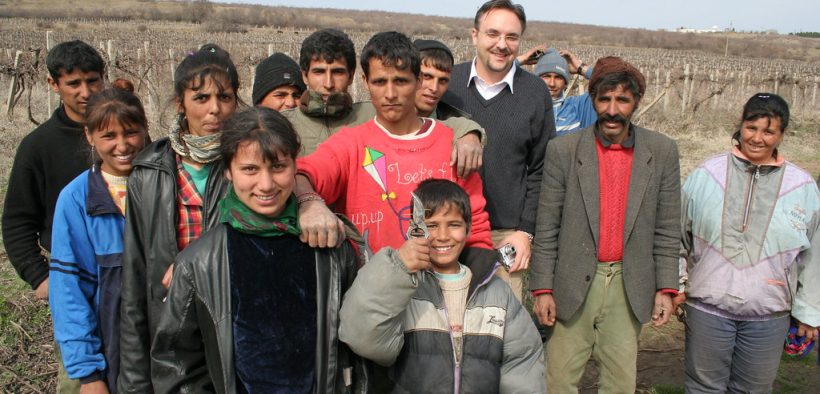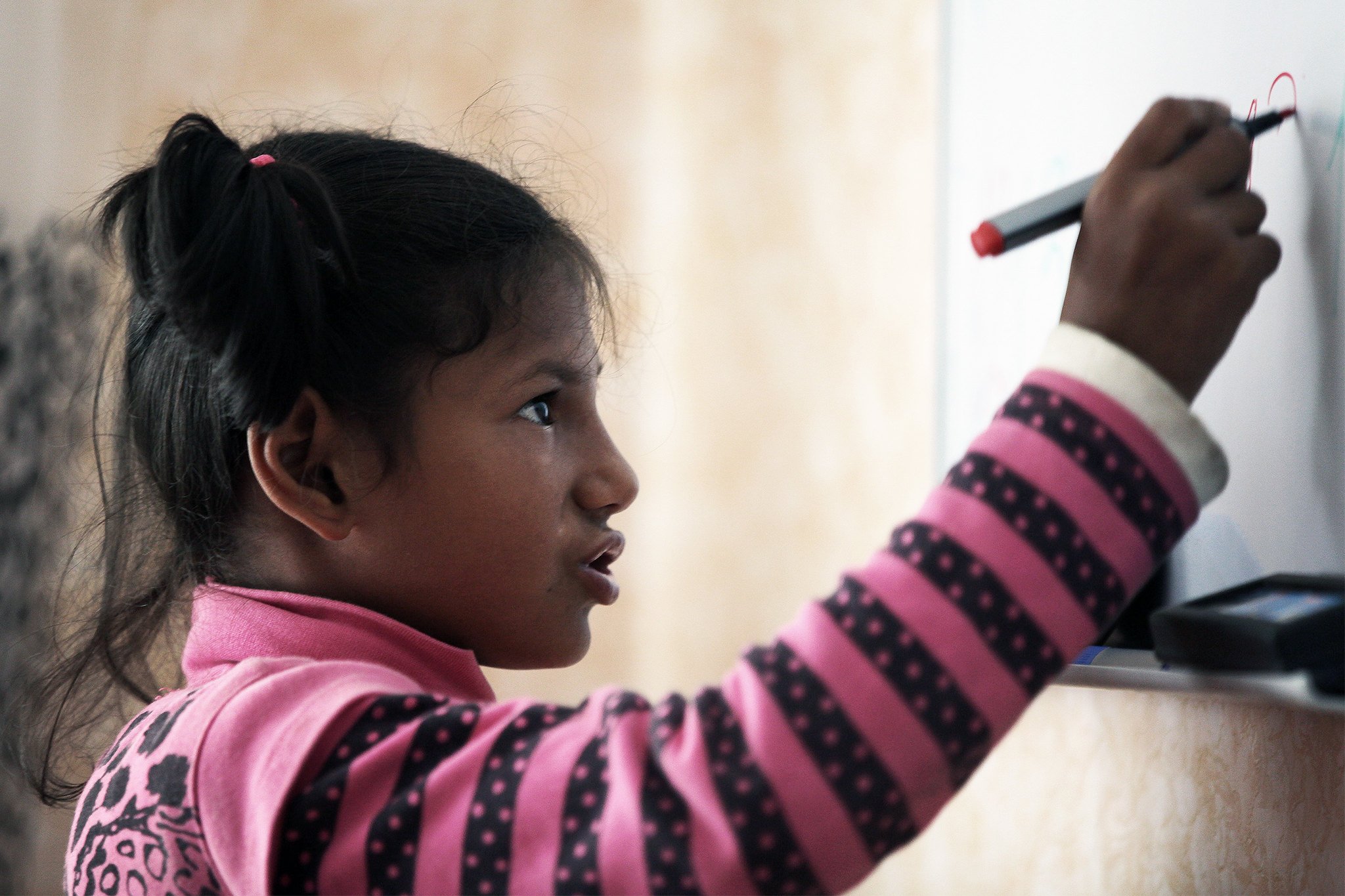Europe’s Roma Discrimination Starts in Segregated and Unequal Schools

This is the second part, in a three-part series on the Roma people in Europe. Roma, who are commonly referred to as “gypsies” though the term is often considered derogatory, face widespread and often state-sanctioned discrimination. Read part one here.
De facto education segregation has been called “the most dangerous cancer affecting the Roma community in the 21st century.”
The Roma are a long-discriminated against group of people that originated out of western India and is now considered stateless. Discrimination against Roma has existed for centuries, but one of the primary challenges facing Roma is unequal and inferior education.
Unequal education keeps younger generations from having the means to realize their personal goals and ensures the cycle of poverty and despair continues for generations. It can also perpetuate negative stereotypes and racist views. Across Europe, Roma are openly discriminated against in education settings and often receive vastly inferior education.
Segregation in Spain
A major problem that Roma communities suffer in Spain and other European countries is the issue of segregation in schools. Spain does not have laws in place to keep Roma students from attending the same schools as other Spanish children, but because Roma communities typically live in close-knit, insular communities that are likely to be in lower-income areas, Roma students are often left with no choice but to attend some of the worst public schools in Spain.
Paqui Perona, a Roma woman from Barcelona who is the president of the group Voces Gitanas (Gypsy Voices), goes as far as to call this system of de facto segregation “the most dangerous cancer affecting the Roma community in the 21st century.”
Spain has major problems with education inequality. A recent study conducted by Javier Murillo and Cynthia Martínez-Garrido of the Universidad Autónoma de Madrid (Autonomous University of Madrid) revealed that Spain’s education system is the sixth most segregated in Europe. The autonomous community of Madrid fares even worse than Spain as a whole. If the community were treated as a country, the rates of inequality in Madrid’s schools would only be surpassed by Hungary.
Roma Segregation in Hungary

Roma girl in Ukraine, 2014. (Photo: Steve Evans)
As dire as educational prospects may be for the Roma children of Spain, the situation is even worse for Roma youth in Hungary. Hungary is mired in political and social corruption, and its education system is a disaster even for non-Roma children. Segregation is widespread, and nearly half of Roma children in Hungary are educated in segregated schools or classes.
As a result of economic turmoil and the return to power of the Fidesz party in 2010, many public schools were transformed into church-run institutions. This trend was accelerated by a January 2013 law mandating that all educational institutions managed and financed by local municipal governments had to transfer power to the Hungarian state.
Many local schools in rural areas realized that the Hungarian government had neither the resources nor the expertise to properly operate these schools at the same level as they had been run previously. As a result, they devised a novel solution: instead of remaining public institutions and giving up power to the Hungarian government, they would become private institutions run by religious organizations. These church-run institutions are primarily run by the Catholic church, but the Reformed Church and the Evangelical-Lutheran Church also operate schools.
The number of children attending church-run schools in Hungary skyrocketed from 2001 to 2011, with the number of children being educated at these institutions increased by 60 percent. The number continued to rise over the next three years, growing an additional 47 percent. Many rural municipalities in Hungary now have no schools except those run by the state.
The problem with this is that schools run by religious organizations do not necessarily offer education that fits the standards employed by public school or non-religious private schools. Many Roma children live in Hungary’s rural areas, and reports of their experiences suggest that the church-run institutions and other schools are openly discriminating against this at-risk group.
Former students of many of these schools claim that they were never taught how to read, write or perform basic arithmetic. At one school in Csörög, where Roma children from neighboring Sződ were sent due to the fact that Sződ did not have any schools, students claimed that they were segregated from their non-Roma peers throughout the school day, not just during classes, but also during lunch and recess breaks as well. Many of the Roma children also only attended school for less than three hours in the afternoon three days a week as a result of discriminatory practices of segregation enforced by their school. Often these afternoon classes were held as late as three o’clock, when all the other non-Roma children had already gone home for the day.
Roma Lawsuit Filed in Hungary
With help from groups such as the Chance for Children Foundation, Roma students were able to file a lawsuit with the Pest County Court, but the case has bounced back and forth throughout the various levels of the Hungarian Court System without any justice being served. However, testimony from the various legal proceedings paints a vivid picture of the educational atrocities that these children endured.
One of the plaintiffs, a Roma man named Atilla Berki, told the court that he can’t even write his own name. He then explained how almost all the Roma children, regardless of age or academic level, were sent to what was known as the “gypsy class.”
“There were seventh graders, fourth graders, we all studied the same thing,” he elaborated. He also disclosed that while ethnically Hungarian children attended class in the new, modern school building constructed after the end of Communist rule in Hungary, from fourth grade onwards Roma children were forced to attend classes in the crumbling, decrepit shell of the old Communist school. Former students like Berki are now adults that have little chance of employment, as they are unable to read and write enough to fill out the necessary paperwork to apply for even the most basic of jobs.
The type of educational segregation described by Berki is often justified by schools claiming that these Roma children have educational disabilities and therefore should be placed in “remedial classes.” Many educational professionals around the world question the method of placing special needs children in remedial classes in general, but it appears that Roma children are being placed in these classes for no reason other than their ethnicity.
Statistics vary, but approximately 70 to 80 percent of Hungarian children in special needs classes are Roma. It seems highly unlikely that such a highly disproportionate number of Roma children display intellectual handicaps. Many Hungarians believe that Roma parents tell their children not to go to school, but it seems more likely that if Roma children are not attending school, it is because of the fact that they are ridiculed, subjected to educational abuse or treated as if they are mentally handicapped in the classroom.
Discrimination Continues Into Adulthood
The idea of Roma parents not being able to raise their own children right is a common train of thought in Hungary, leading people to discriminatory conclusions. When asked about what could be done to help the situation of Roma in her country, one Hungarian woman responded by asking “What can you even possibly do to help these people other than take the children away and put them in foster care? What else can you even to help undocumented, uneducated people who have no desire to become documented, educated people?”
Hungarian Roma are often denied work even before they have the opportunity to demonstrate their qualifications. László Lakatos, a 20-year-old Roma man from Budapest, told EUROVIEWS about a time when a friend told him about an open position with the company he worked for. When the friend told his employer Lakatos’ name, his boss immediately said that he would not hire him. “He hadn’t seen or spoken to me, but because of my name his boss knew that I was from a Roma family so instantly said ‘no,’” said Lakatos.
Segregation of Roma children in schools is also a major problem in non-European Union states such as Serbia, Macedonia, Ukraine and Albania, all of whom are attempting to join the European Union. Within the European Union, Hungary, Slovakia and the Czech Republic have all been subject to legal action from the European Commission due to segregation of Roma children in schools. Unfortunately, these legal proceedings have not seemed to help the situation; rather, it seems to be worsening, especially in Slovakia.
Hungary isn’t the only country in Eastern Europe with a deep-seated cultural animosity towards the Roma. Paul, an American who works with the Peace Corps in Ukraine, told Citizen Truth that common Ukrainian stereotypes regarding the Roma are almost the same as in Hungary. People think that “they steal and they’re dirty. It’s frowned upon to interact with them. The communities are completely segregated and the Ukranians don’t interact with the Roma unless absolutely necessary.”
Many Eastern European Countries Facing Economic Turmoil
Most Eastern European countries such as Hungary and Ukraine are also facing some degree of economic turmoil, and according to Paul, “the government doesn’t really have the funds to provide adequate social services for everyone and most ethnic Ukrainians are not much better off financially than the Roma, which leads to even more tension.”
This situation not only makes it nearly impossible for Roma to access healthcare and educational services, but also fuels the enmity between the different ethnicities living in Eastern Europe. The importance of education cannot be overstated. Education gives people the opportunity to break cycles of poverty, learn more about themselves and their world and contribute to the greater good.
Roma are not only being denied opportunities as a result of the educational barriers they are forced to confront; they also face widespread prejudice as a result of negative stereotypes every day. These stereotypes and obstacles make it incredibly difficult, if not impossible, for Roma to find decent jobs and make a living, which further fuels stereotypes depicting Roma individuals as lazy criminals who don’t want to make an honest living.
While European laws protecting different groups from racially motivated discrimination can help, legal protection is not enough to fully protect the Roma people from prejudice, discrimination and hate. Roma prejudices are deeply held stereotypes and racist beliefs that have existed in Europe for centuries, improving the Roma plight means confronting that history.















